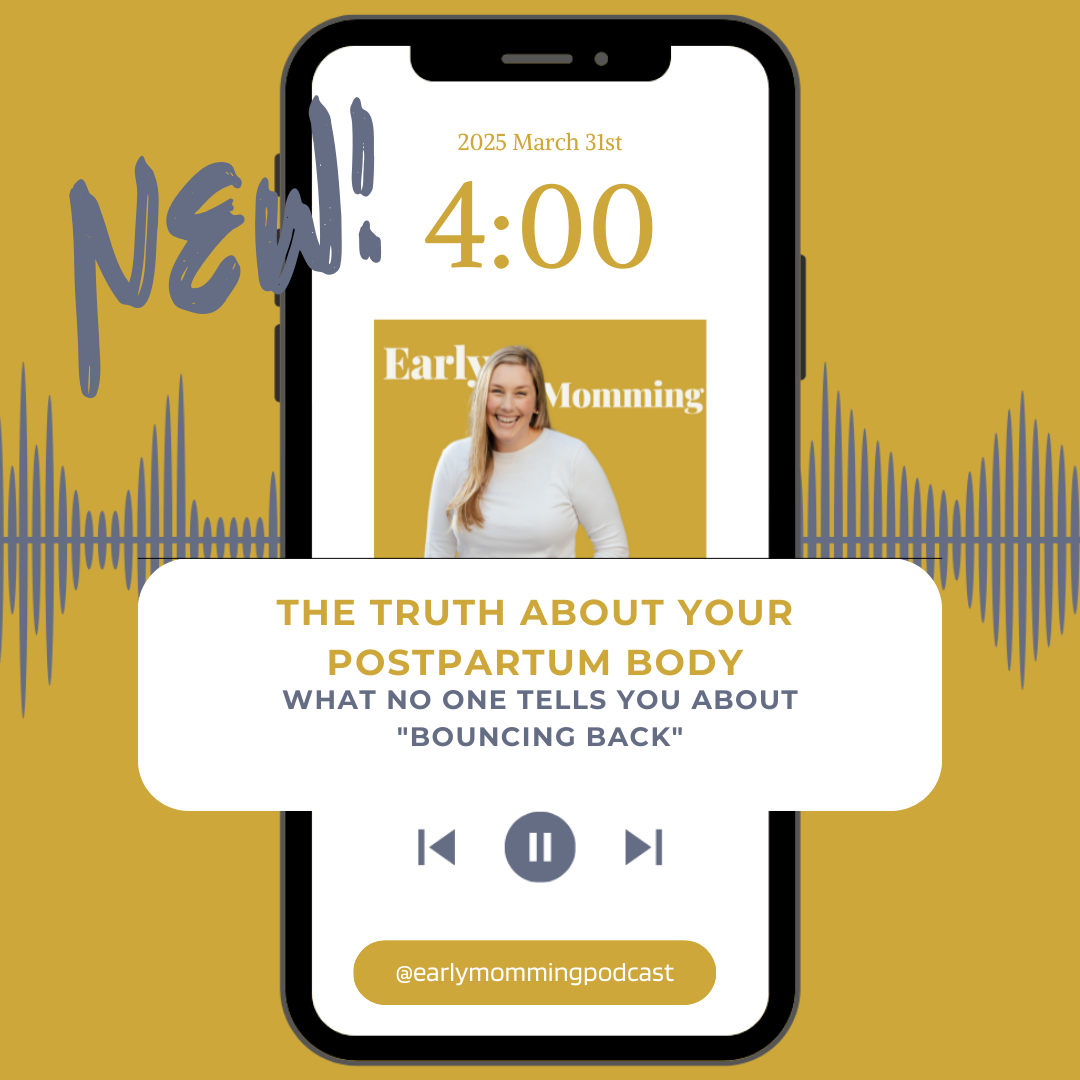
There’s a moment every new mom remembers: your baby’s first perfect latch. Your heart soars—until reality sets in. In the quiet hours after you bring baby home, you realize that breastfeeding isn’t as intuitive as it looks. Suddenly, you’re sorting through conflicting advice on milk production, supply building, cluster feeds, and nipple pain.
That’s exactly why we devoted Season 2, Episode 08 of the Early‑Momming Podcast to Breastfeeding 101. In that conversation, Erica and Hillary blend clinical expertise (Hillary’s an RN and IBCLC) with real‑life mom hacks. Below is your friendly, roadmap—from the basics of breastfeeding and milk production through functional feeding rhythms, latch tips, newborn feeding support, and the breastfeeding red flags you don’t want to miss. No guesswork, just clear, evidence‑based guidance for more confident feeds and, yes, more restful nights.
The Miracle of Milk: How Production Really Works
Around halfway through pregnancy, your body begins producing colostrum—the thick, gold‑colored “first milk” packed with antibodies. In the first couple of days after birth, colostrum remains your baby’s sole nourishment. Then, as your placenta detaches, you experience a surge of prolactin—the hormone that triggers lactogenesis II, or your “milk‑coming‑in” phase. You’ll feel breasts grow fuller and firmer, usually between days 2 and 5 postpartum.
In the transitional phase (0–2 weeks), you’re learning to read your baby’s demand cues. Between weeks 2 and 4, the building phase, supply stabilizes above your “prolactin line”—a critical threshold for long‑term volume. After four weeks, you enter maintenance, where your milk supply fine‑tunes itself to how often and how effectively you remove milk, whether by nursing or pumping.
Key takeaway: Those first four weeks are the foundation for sustained milk supply. Prioritize frequent, effective milk removal and lean into support whenever you hit a bump.
Your First Month: Laying a Strong Supply Foundation
In practice, nursing eight to ten times in 24 hours will keep prolactin levels high enough to build supply. Newborns naturally cluster‑feed, often nursing eight–ten times daily, and sometimes more until your milk fully transitions. If you’re exclusively pumping, aim for eight pump sessions evenly spaced around the clock.
Weight checks and diaper output are your best objective indicators. Most babies regain birth weight by day 10, and by days 4–5 you should see four–five wet diapers plus stools shifting from tar‑like meconium to mustard‑yellow. Beyond these numbers, trust your instincts: if your baby latches for five minutes yet still seems ravenous, they need more volume. If they struggle to wake for feeds or seem unusually sleepy, jaundice or other issues might be sapping their energy.
If you’d like one‑on‑one support, book a prenatal or early postpartum consult with our IBCLC team—virtual visits available nationwide.
Nailing the Latch: From Clumsy to Confident
A deep, pain‑free latch is the cornerstone of successful breastfeeding. Imagine your baby’s ears, shoulders, and hips aligned in a straight line—this positioning supports coordinated suck‑swallow‑breathe rhythms. When you bring baby to the breast, start with their nose just beyond your nipple and guide them in chin‑first. Flatten your breast into a gentle “C”‑shape so the nipple diameter is smaller, making it easier for baby to take in more tissue. You’ll know you’ve gotten it right when you can see or hear distinct swallows without pain.
If feeding ever hurts or you notice cracked, bleeding nipples, that’s not normal—pain can block oxytocin release and undermine your let‑down reflex. Seek hands‑on help from a qualified lactation consultant to troubleshoot positioning, tongue ties, or any other concerns.
Hand Expression: Your Secret Insurance Policy
Learning to hand‑express in the first 24–48 hours is one of the most powerful tools in your arsenal. By manually expressing colostrum, you:
- Stimulate prolactin to boost supply
- Collect precious colostrum for supplemental feedings or storage
- Clear ducts and reduce engorgement
Make it your “homework” to practice hand expression after every feed on day 1. Even a few drops count as “insurance” for your supply and give you valuable confidence.
For even more in‑depth strategies (including pumping tips, troubleshooting, and weaning), check out The Complete Breastfeeding & Pumping Guide.
Functional Feeding & Sleep: The Rhythm That Fuels Rest
As your baby matures, their suck‑swallow rhythm should settle into roughly a one‑to‑one or two‑to‑one pattern (“suck, swallow, suck, swallow”). These functional feeding patterns help babies transfer three to five ounces in 10–25 minutes after the first month, setting them up for longer sleep stretches.
In the evening you may notice cluster feeds—back‑to‑back nursing sessions as your baby loads up on higher‑fat “hind milk” to fuel overnight. Rather than resisting those evening clusters, embrace them. Many families find that by six weeks postpartum, daytime feeding support allows their baby to down to one short overnight feed—and by three to four months, even that goes away.
Common Red Flags & When to Reach for Help
Even with meticulous planning, some red flags warrant immediate attention:
-
Excessive weight loss: More than 10% below birth weight or failure to regain by day 10.
-
Over‑feeding outside growth spurts: More than ten nursing sessions in 24 hours once past known cluster‑feeding windows.
-
Painful latch: Cracked or bleeding nipples that persist despite repositioning.
-
Persistent jaundice or lethargy: Difficulty waking for feeds or sluggish behavior.
If you spot any of these, connect with an IBCLC as soon as possible—ideally within the first week postpartum—to protect both your baby’s health and your milk supply.
Debunking Common Breastfeeding Myths
Misinformation can make breastfeeding feel like a minefield. Let’s clear the air:
-
Myth: You must guzzle a gallon of water daily.
Reality: Stay well‑hydrated, but moderate fluid intake won’t break your supply—your body prioritizes milk. -
Myth: Skip pumping when baby sleeps through the night.
Reality: Cap your overnight fast at 8–9 hours (pump before bed) to prevent supply dips, especially in the first six months. -
Myth: Diet doesn’t matter.
Reality: While your body will produce milk even on an imperfect diet, nutrient‑dense foods and galactagogues like spirulina or moringa support both you and your supply. -
Myth: A little alcohol or caffeine is harmless anytime.
Reality: Small amounts are typically fine, but timing around feeds matters—allow two hours for clearance and watch for changes in let‑down or baby’s sleep patterns.
Finding Evidence‑Based, Compassionate Support
Breastfeeding is both science and art. Seek out an International Board Certified Lactation Consultant (IBCLC) near you, or schedule a virtual consult if you can’t find someone in person. A prenatal session followed by a check‑in around days 3–5 postpartum can prevent small issues from becoming crises. A quality consultant will explain why they recommend each strategy, empowering you to make choices that fit your lifestyle.
Your Next Steps
Breastfeeding is a skill you learn, not a secret you uncover overnight. Start with hand expression in your first 24 hours, then schedule a prenatal or early‑postpartum consult for personalized guidance on latch and supply building. Keep refining your technique with video demos and checklists, and don’t hesitate to reach out if you notice any red flags. With evidence‑based information, hands‑on support, and self‑compassion, you’ll guide both you and your baby toward more confident feeds and more restful nights.
In your corner,
Hillary (RN, MNS, IBCLC)
Founder, Baby Settler

Expert Insights Delivered to Your Inbox
Hey, I’m Hillary. As a labor & delivery nurse, feeding specialist, and a mom of four, I have a lot of friends
It’s funny. I may not hear from someone for actual decades, and then, when they hit about their third trimester, the texts start rolling in.
Honestly, I’m glad to be there for them; few moms have a qualified (and non-judgy!) friend in their corner.
I’d like to be in your corner, too.




